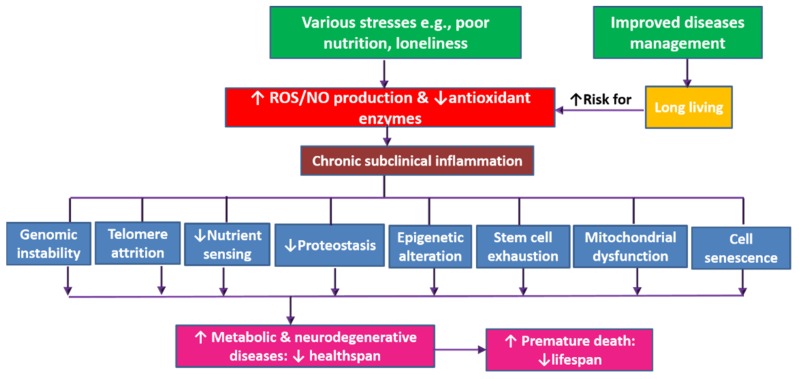Figure 1.
The dynamics of aging-related decrease of healthspan and lifespan. The production of free radicals increases with aging (which is on the rise out of improved disease management) and also with exposure to various stresses (e.g., pollution, poor nutrition, and psychological stress) leading to oxidative stress. This is associated with reduced production of antioxidant enzymes and activation of inflammatory pathways. Both oxidative stress and chronic inflammation lead to a trail of cellular and molecular alterations: telomere attrition, epigenetic alterations, genome instability, reduced proteostasis, disturbed nutrient sensing, mitochondrial dysfunction, cellular senescence, stem cell exhaustion, and altered intercellular communication. Such age-related physiological alterations result in poor health and loss of function out of increased occurrence of various metabolic and neurodegenerative disorders. Age-related disorders are associated with increased mortality and premature death i.e., decreased lifespan.

